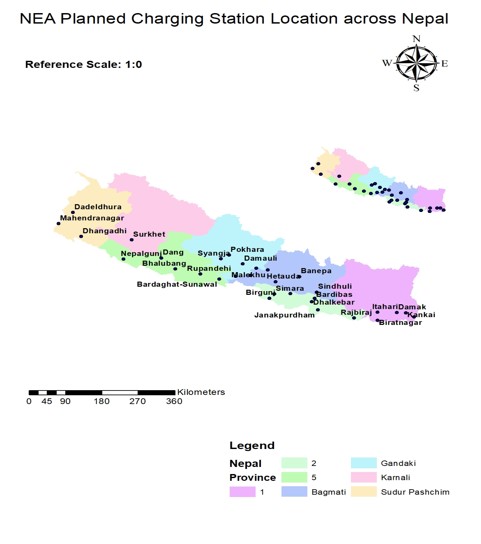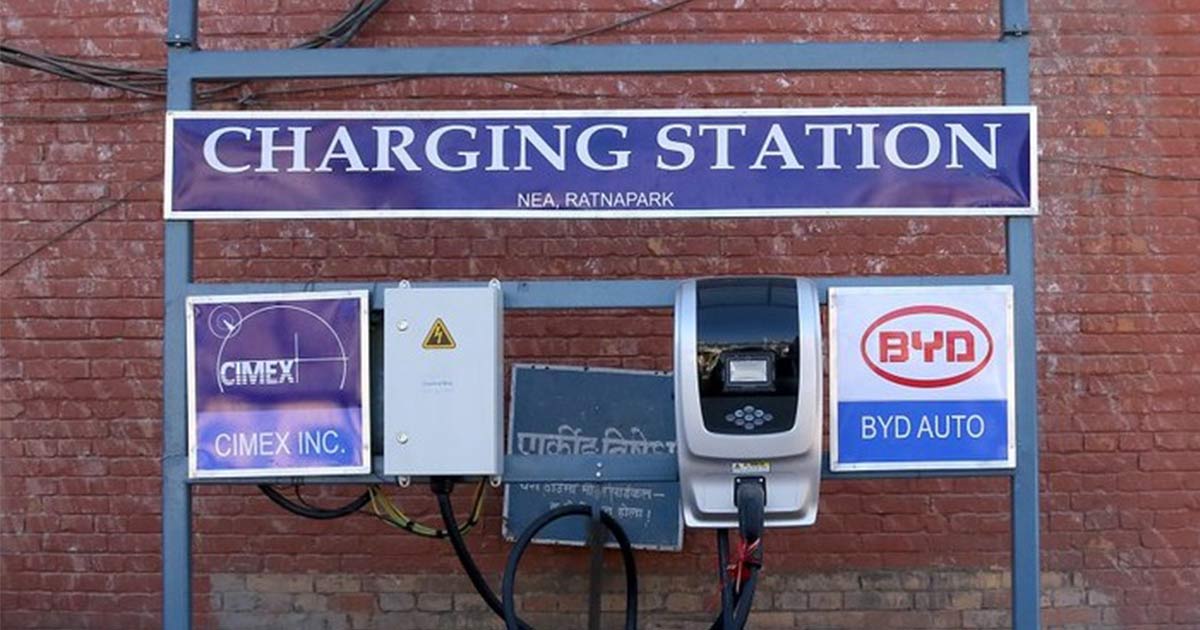EV Charging Station in Nepal
The increasing popularity of electric vehicles (EVs) in recent years has been driven by their environmental benefits and sustainability compared to traditional fuel vehicles. In Nepal, the government has recognized the potential of EVs to combat climate change and has implemented policies to encourage the transition to EVs. As a result, the establishment of EV charging stations has become an essential infrastructure for the country. The Nepal Electricity Authority (NEA) has announced plans to install 50 EV charging stations across the nation to make charging more accessible and convenient for EV owners. However, despite the government's efforts to promote the use of EVs, there is currently a lack of a proper model that has been developed based on the specific context of Nepal's roads for EVs.
Despite the government's efforts to promote the use of electric vehicles and the NEA's plans to install charging stations across the country, there is currently a lack of a comprehensive model that has been specifically designed and studied in the context of Nepal's roads and infrastructure for electric vehicles. The current charging stations available are still limited and concentrated only in a few areas such as Lumbini, where the public bus running from Bhairahawa to Lumbini is charged. This charging station is considered the largest one in Nepal at the moment, but it is far from sufficient to support the growing number of electric vehicles on the road. The government and different organizations are aware of this limitation and are working to increase the number of charging stations in different areas of the country in collaboration with Sajha Yatayat and NEA, as well as the Thee Go Group. However, there is still a need for research to develop a model that can be used to identify the optimal locations for electric vehicle charging stations to ensure that EV owners have access to convenient and reliable charging options and contribute to a more sustainable future for Nepal.

As the adoption of electric vehicles (EVs) continues to rise in Nepal, proper research must be conducted to develop a model for determining the optimal locations for EV charging stations. This is a pressing issue, especially with the government's plans to replace public buses with electric ones in the future. Therefore, it is important to consider various factors such as population density, traffic flow, and distance between charging stations when determining where EV charging stations should be located. Researchers are currently working on developing such a model that takes into account these important considerations to ensure that EV owners have access to convenient and reliable charging options. This will ultimately contribute to a more sustainable future for Nepal by making EV charging more accessible and efficient.
Despite the efforts being made to establish EV charging stations across Nepal, there is currently a lack of research that has been conducted to determine the optimal locations for these stations. This is an important issue to address, as proper placement of charging stations can greatly impact the convenience and accessibility of EV charging for vehicle owners. Without a well-researched model, the placement of charging stations may not be as effective in promoting the use of EVs in Nepal. By researching to develop a model that considers factors such as population density, traffic flow, and distance between charging stations, we can ensure that EV owners have access to convenient and reliable charging options. Ultimately, this will contribute to a more sustainable future for Nepal as the usage of EVs will increase.
